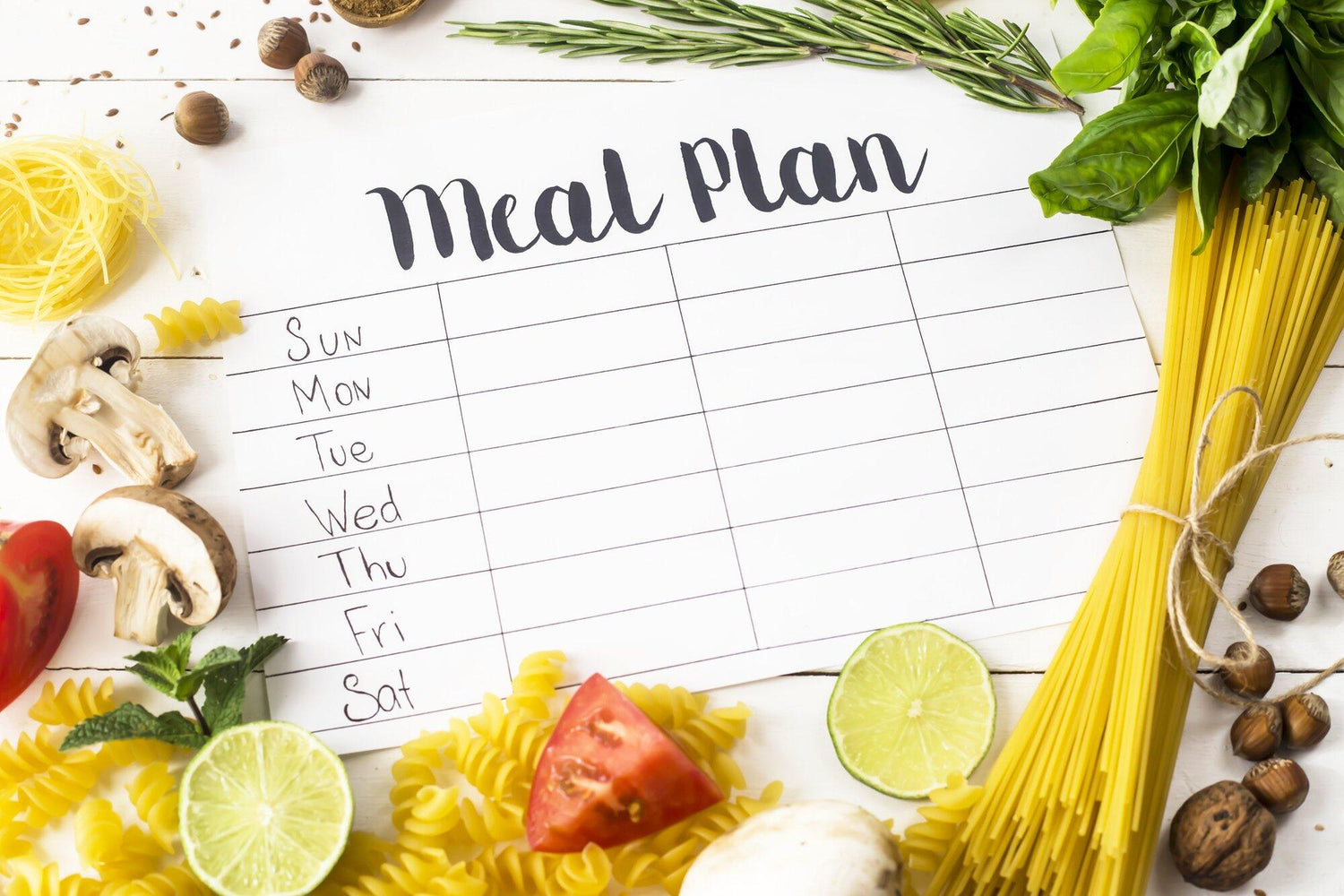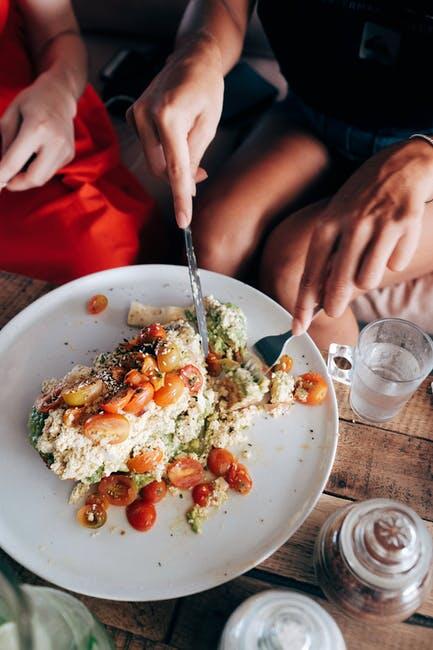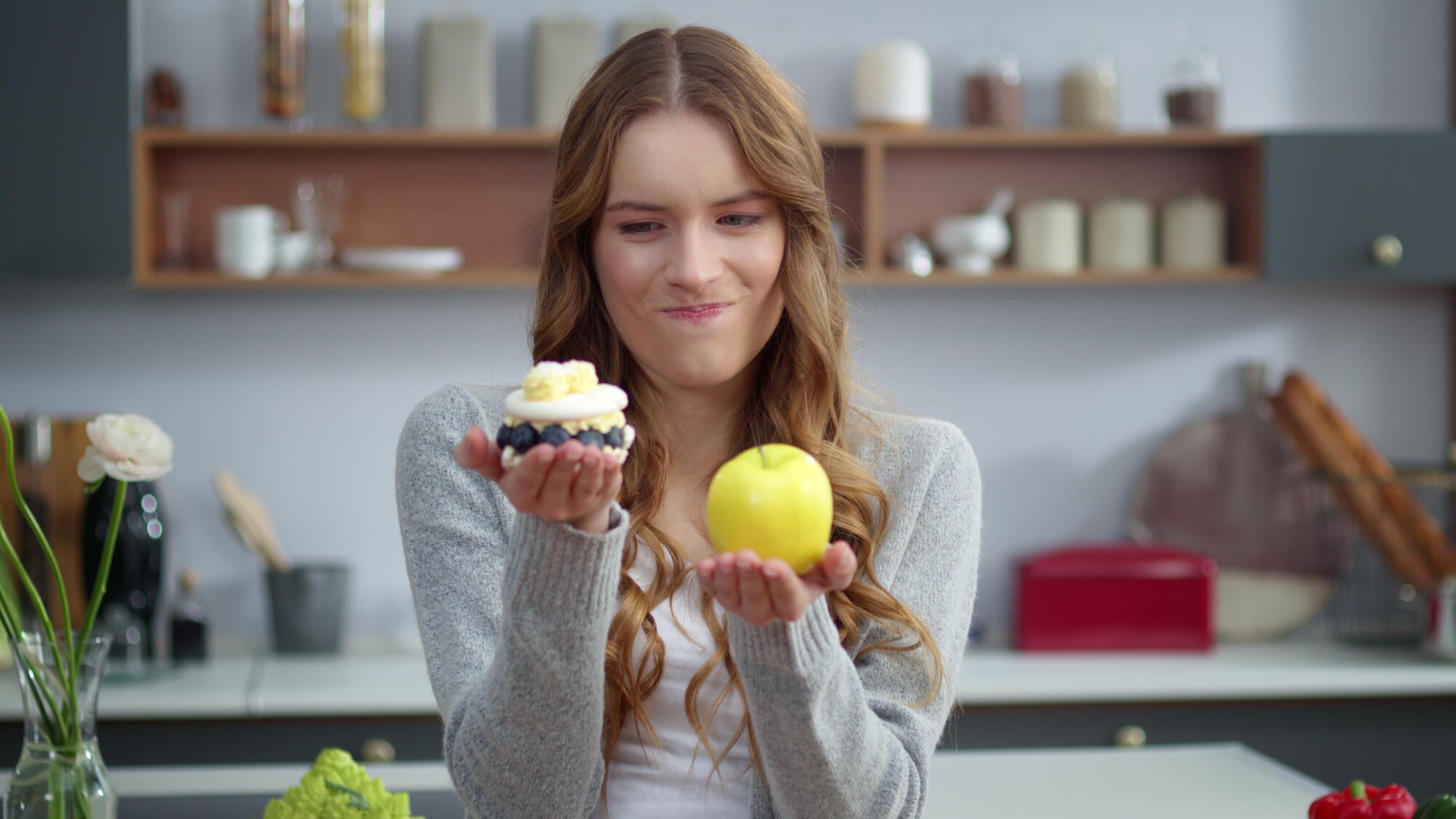If the word diet gives you the ick and has you envisioning dry chicken breast and sad salad leaves for dinner, then it's time to rethink the concept. While dieting does not sound like fun and never has, there is a science to losing unwanted pounds which boils down to one simple concept: a calorie deficit.
The great news about a calorie deficit is that you can still eat delicious meals -- they just need to fit into a specific calorie window to allow for weight loss. This is where an 1800 calorie meal plan is a good starting point.
Check out the rest of this blog for a better understanding of how a calorie deficit works, meal plan ideas, and more.
What is a Calorie Deficit?
The concept is pretty simple. To be in a calorie deficit means that you need to consume fewer calories than you burn. This is how the body enters a state where it starts to burn fat and shift weight.
For example, if your body needs 2,000 calories to maintain your current weight (including how much movement you do each day), eating slightly less than this each day will equate to weight loss.
In essence, your body requires a certain number of calories to fuel you. This number is very specific to each individual and depends on several factors. If you consume slightly less than your body's required amount of calories, you will begin to lose weight.
For most people, kicking off your weight loss journey with an 1800 calorie meal plan is the safest place to start.
Prioritizing Nutrition in Your 1800 Calorie Meal Plan
Consuming fewer calories than your body needs might not sound like a great idea, but it's the fundamental basis for weight loss. But because you're consuming fewer calories day to day, you need to make good nutrition a top priority.
This is the best way to lose weight in a healthy, sustainable manner, while reducing your risk of illness or disease. When consuming an 1800 calorie meal plan, make sure to include a good mix of all the important food groups.
This includes carbohydrates, protein, healthy fats, and fruit/vegetables at every meal. If you're interested in what an 1800 calorie meal plan might look like, here is a simple 5-day meal plan:
Day One: Breakfast
Two slices of wholegrain toast and two boiled eggs.
Day One: Lunch
A loaded sweet potato. Here's what you'll need:
- 1/4 x cup canned beans of your choice (rinsed and drained)
- 1/4 x cup salsa
- 1/4 x cup low-sodium cheese
- 1/2 x cup zero percent Greek yogurt
- 1/4 x avocado
- 1 x tablespoon of chopped chives
Slice your sweet potato in half and place your beans in the middle. Top with salsa, avocado, yogurt, cheese, and chives.
Day One: Snacks
Eating within a designated calorie window does not mean skimping on snacks! Here's a simple example of calorie-friendly snacks for day one:
- 1/2 x cup of pineapple chunks, sprinkled with cayenne pepper, and 10 cashew nuts
- A peanut butter protein bar
- A large handful of roasted chickpeas
Day One: Dinner
A spicy fillet of salmon, topped with sliced scallions and served with brown rice. Finish off your meal with a Greek yogurt pop for dessert.
Day Two: Breakfast
Indulge in a delicious breakfast burrito. Opt for a wholemeal or sprouted grain tortilla and fill it with two scrambled eggs, avocado, cilantro, and sliced red chili.
Day Two: Lunch
A nutrient-dense lentil salad, here's what you'll need:
- 1 x cup of steamed/canned lentils
- 1/3 x cup chopped cucumbers
- 1/3 x cup tomatoes
- 1/3 x cup carrots
- 1 x tablespoon chopped scallions
- 1 x tablespoon of walnuts
For a calorie-friendly dressing, mix together a tablespoon of olive oil, two tablespoons of red wine vinegar, and a quarter avocado (mashed) and salt. For extra micronutrients, you can add in six ounces of baby spinach to the salad.
Day Two: Snacks
Here are a few delicious snack ideas to fill you up on day two:
- 1 x cup of snacking carrots dipped in hummus
- 1 x cup of cucumber dipped in a creamy, cheesy dip made from zero percent Greek yogurt, mixed with one wedge of Laughing Cow Light Swiss cheese
- 1/2 x cup of nonfat yogurt, mixed with half a cup of frozen berries
Day Two: Dinner
Yes, you can still eat fries and lose weight on an 1800 calorie meal plan. For dinner, opt for sweet and smoky glazed chicken thighs (two per serving), served with three ounces of frozen sweet potato (or regular potato) fries.
Day Three: Breakfast
Today's breakfast is a colorful bowl of goodness with a yogurt and berry bowl, topped with granola clusters.
Day Three: Lunch
For these Asian-inspired shrimp cups you'll need:
- Pre-cooked shrimp (roughly 10 per portion)
- 1/2 cup of edamame beans
- 1/2 cup of red bell pepper (chopped)
- 2 x tablespoons of peanuts
- 1 x tablespoon of teriyaki sauce or coconut aminos
Divide the mixture up and serve in four large lettuce leaves -- romaine lettuce works best.
Day Three: Snacks
Simple snack ideas include:
- A mini cheese board comprised of 1/2 cup of grapes, one wedge of hard, part-skim cheese, and five wholegrain crackers
- 1 x tablespoon of peanut butter and half a medium pear
- 1 x handful of chocolate-coated almonds
Day 3: Dinner
Good old spaghetti and meatballs, just swap out the regular noodles for a spaghetti squash variation.
Day Four: Breakfast
You better believe waffles are still part of a meal plan that helps you lose weight! This breakfast consists of two frozen waffles topped with one tablespoon of almond or peanut butter, two chopped dates, and a sprinkle of cinnamon.
Day Four: Lunch
You can also enjoy takeout, just with a few simple amendments. For example, enjoy your favorite burrito bowl from Chipotle, opting for fajita veggies, steak, and pinto beans. Pass on the rice and dressing and choose a serving of corn salsa instead.
Day Four: Snacks
- A chocolate protein shake and one ounce of roasted pumpkin seeds
- Pumpkin pie pudding made with 1/2 cup of canned pumpkin, 1/2 cup of zero percent Greek yogurt, a dash of cinnamon, nutmeg, and a little honey
Day Four: Dinner
A large roasted vegetable salad (not the boring kind!) packed with flavor from a mixture of shiitake mushrooms, grilled acorn squash, and roasted chickpeas.
Finish off your meal with a dessert of one cup of fresh strawberries and a dash of cream.
Day Five: Breakfast
This is a great savory option with a mixture of one cup of brown rice (instant, from the packet, is just fine), topped with a fried egg and some roasted sesame seeds.
Day Five: Lunch
This is a retake on a classic tuna salad. Soak half a cup of couscous in some hot water, and add a squeeze of lemon and some salt. Mix in a 5-ounce can of tuna (the low-sodium option) and add the following ingredients:
- 2 x cups chopped romaine lettuce
- 1/4 cup shredded carrot
- 1/3 cup of canned chickpeas
- 1/2 cup of edamame beans
- 6 cherry tomatoes
For a dressing, mix lemon juice and a third of a cup of mayonnaise until it's a runny consistency then toss in the salad.
Day Five: Snacks
- For a sweet tooth, go for half a cup of frozen strawberries and one tablespoon of chocolate chips
- If you're craving something salty, opt for a small handful of honey-roasted peanuts
- As a third snack, go for one cup of sliced bell peppers dipped in two tablespoons of hummus
Day Five: Dinner
Sautée 5 ounces of shrimp in some olive oil and garlic. Add a dash of cream until a sauce forms and serve over a single portion of wholewheat pasta of your choice. Top with some chopped Italian parsley.
Tips for Maintaining a Healthy Calorie Deficit
If you plan on losing weight and keeping it off, a calorie deficit that focuses on losing weight slowly and steadily is best. Make sure that the meal plans you choose for an 1800 calorie deficit have some flexibility, too.
Here are some other tips to help support your weight loss journey while you're eating in a calorie deficit:
- Keep hydrated -- try to drink a minimum of two liters of water per day
- Don't skimp on your protein intake -- eating enough of this macronutrient will help you to feel fuller for longer and also assists with muscle growth if you plan on working out
- Add a multivitamin to your daily routine in case you fail to fill any nutrition gaps along your weight loss journey
- Try to get enough sleep -- this is essential in maintaining a well-balanced metabolism, which will support your weight loss goals
Ultimately, losing weight and maintaining what you've lost comes down to your lifestyle. Being healthy is about the choices you make, every day.
Make Your Protein Intake a Priority
Protein is key to keeping your metabolism in check. It's also essential in ensuring you feel satiated at every meal, which helps to minimize overeating while curbing your cravings. Not to mention how protein supports muscle growth and maintenance if you plan on adding exercise to your daily routine.
That's why it's so important to prioritize protein at every meal.
If you're looking for smart ways to prioritize protein while you're in a calorie deficit, Diet on Sale is your go-to for protein-packed products. Explore here for more.




Leave a comment
This site is protected by hCaptcha and the hCaptcha Privacy Policy and Terms of Service apply.